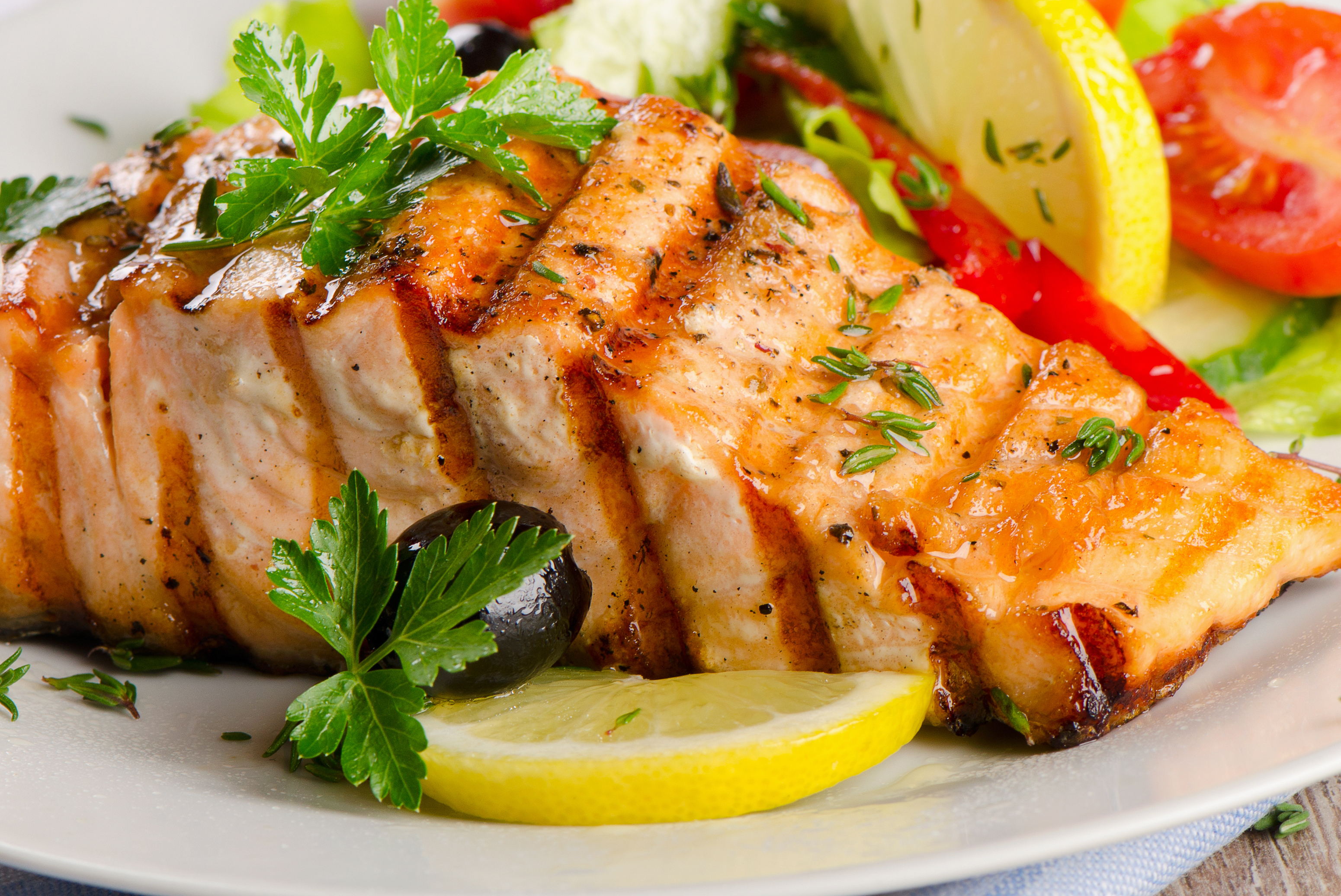Benefits of Eating Fish
Nutritional Benefits of Eating Fish
Fish provides a variety of health benefits through providing vital nutrients like Omega-3s, which the body does not create on its own, and serving as an ideal source of lean protein, high in protein and low in calories and saturated fat.
The good news is that there are quick and easy ways, like canned or pouched tuna, to get more seafood in your diet. Explore the nutritional benefits below and get great seafood recipes here.
Omega-3s
What are they?
Omega-3s in seafood are a powerful nutrient—they help protect the heart, brain and eyes in babies and adults. The most powerful omega-3s available are found in seafood. Just 2-3 servings a week is all you need.
Omega-3s are a healthy type of fat. There are two main categories of omega-3s:
- Seafood contains mostly eicosapentaenoic (EPA) and docosahexaenoic acid (DHA). These are called long-chain omega-3s and have powerful heart and brain benefits.
- Plants and nuts contain mostly alpha-linolenic acid (ALA) omega-3s. These are also called short-chain omega-3s. While ALA omega-3s are healthful, they are not offer the same powerful heart and brain benefits as EPA and DHA.
Your body cannot make omega-3s on its own and it doesn’t do a good job turning ALA into EPA and DHA. In fact, a deficiency in omega-3s can be harmful. Research shows that a diet low in omega-3s contributes to 84,000 preventable deaths per year.i So it is important to eat seafood, to get plenty EPA and DHA omega-3s.
What are the health benefits?
Studies have shown that omega-3s, which are found in abundance in fish like tuna, help to keep brains and hearts healthy throughout a person’s life – and are even important before you’re born!
Help little ones’ brain and eyes develop, especially during the third trimester. During pregnancy, all of the DHA gathered by the growing baby must come from the mother’s diet.
Boost your mood. Plenty of DHA can help prevent or manage depression during and after pregnancy ii
Help your heart stay strong. DHA and EPA boost heart health by decreasing blood triglyceride levels, slowing the buildup of plaques that contribute to the “hardening of the arteries,” lowering blood pressure slightly and reducing the risk of abnormal heart rhythms that can lead to sudden death. iii
Stay strong and healthy. Omega-3s can be beneficial for your heart, brain and joints.
Protein and Calories
What are Protein and Calories?
Protein is an important part of every cell in the human body and makes up a large part of your skin, hair, nails, muscles, organs and glands. It builds, maintains and replaces the tissues in your body. Enzymes, hormones and blood all contain protein too.
According to the United States Department of Agriculture (USDA), calories are a tool for measuring the amount of energy a food or beverage contains, which fuels your body. iv
Why do We Need Them?
In fewer than 200 calories, seafood, such as tuna in water, packs a protein punch with about 20 grams per serving.
Your body needs protein from food to repair cells and make new ones. It’s a necessary part of your diet in all stages of your life, but especially during those when you tend to grow a lot – like childhood and adolescence. You may also need a little extra protein during injury and sickness. Women require more protein during pregnancy. Besides seafood, other common protein-rich foods include meat, beans and dairy.
Whether at work, play or even when you’re resting, your body also needs energy from calories. However, consuming too many calories can cause you to gain weight, so it’s important to choose foods that provide enough nutrients without too many calories.
The amount of protein and calories you need depends on your age and health.
Women who are at a healthy weight before getting pregnant should expect to gain 25 to 35 pounds as they carry their baby. Eating nutrient-rich foods that are low in calories, like seafood, can help mom and baby get essential protein and contribute to healthy weight gain.
Protein helps the body repair and make new cells. This is especially important during childhood and adolescence, when a child is growing a lot. Seafood is a low-calorie, high-protein food that can help meet a growing child’s needs.
Generally, most adults need 2 to 3 servings of protein rich food each day to meet their needs. One serving is about 3 to 4 ounces of seafood, meat or poultry.
Protein can help maintain strong bones and organ health. As we age, it is important to eat a diet rich in low-calorie, high-protein foods such as seafood.
i Danaei, G., Mozaffarian, D., Taylor, B., Rehm, J., et al. (2009). The Preventable Causes of Death in the United States: Comparative Risk Assessment of Dietary, Lifestyle, and Metabolic Risk Factors. PLoS Med 6(4).
ii Harrison, L. (2001, November 1). Psychology Today. Eating fish during pregnancy and lactation may benefit mother and child. Available at: http://www.psychologytoday.com/articles/200111/eating-fish-during-pregnancy-and-lactation-may-benefit-mother-and-child. Accessed March 5, 2012.
iii Horn, L. V., PhD, RD., McCoin, M., MPH, RD., Kris-Etherton, P. M., PhD, RD., Burke, F., MS, RD.,Carson, J. A. S., PhD, RD., Champagne, C. M., PhD, RD., Sikand, G., MA, RD. (2008, February). The Evidence for Dietary Prevention and Treatment of Cardiovascular Disease. Journal of the American Dietetic Association, 108(2).
iv United States Department of Agriculture. Weight Management & Calories. Available at: http://www.choosemyplate.gov/weight-management-calories/calories.html. Accessed February 22, 2012.





